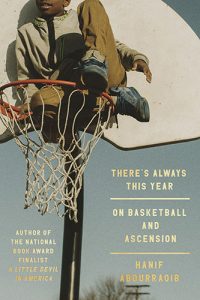Bellevue Literary Review – Fall 2011
Volume 11 Number 2
Fall 2011
Biannual
Julie J. Nichols
Last week my creative nonfiction writing class workshopped a piece about one student’s experience with ADD in elementary school. He described zigzag thoughts, hypersensitive ears, rising frustration, and a positively entertaining rage, in a perfectly modulated eight-year-old voice; he then took us through the process of diagnosis, disastrous prescription of inappropriate meds, and ultimately courageous development of a customized program that enabled him to manage the disorder satisfactorily. His understated irony, his consistent voice, and the beautifully appropriate imagery made the piece one of the most successful our class has seen this semester.
Last week my creative nonfiction writing class workshopped a piece about one student’s experience with ADD in elementary school. He described zigzag thoughts, hypersensitive ears, rising frustration, and a positively entertaining rage, in a perfectly modulated eight-year-old voice; he then took us through the process of diagnosis, disastrous prescription of inappropriate meds, and ultimately courageous development of a customized program that enabled him to manage the disorder satisfactorily. His understated irony, his consistent voice, and the beautifully appropriate imagery made the piece one of the most successful our class has seen this semester.
The point of this bit of background information? Illness and its management are among the most common, and most human, of our experiences. To write them well is to give profoundly-needed expression to an essential aspect of being human.
Such expression is the purpose, mission, and beautifully-executed work of Bellevue Literary Review, celebrating its tenth anniversary this year as “a journal of humanity and human experience.” In another life, I was a hands-on energy healer, working on people with a wide variety of complaints in intimate, heartfelt partnerships of giving and receiving. Sometimes there were life-altering results. If the writing in this issue resonates for me on a deeply personal level, how much more must it resonate for those in the medical and psychiatric professions, whose practices and procedures are so intrinsic to the plot points and images here. And it resonates even more for anyone suffering the afflictions, attempting the cures, enduring the effects, and adjusting to the consequences of the very human condition of illness and treatment. There is a gut-deep gratification to reading this fine issue. The offerings here are extremely satisfying literature, well worth your attention because you’re human—and good writing heals.
“Medicine has the x-ray; literature has the poem,” Alberto Rios says in “Medicalarium,” and further on: “Medicine has the patient; literature has the reader.” This lovely prose poem could be a synecdoche for the entire issue. There are poems about death, “Death is Private” (Hal Sirowitz) and “The Order of Mothers: What Friends and Relatives Said” (Claire Kageyama-Ramakrishnan), which are poignant and true:
Which of us can walk into the place
where death presides and know just what to say
and do, and say and do it, nothing more
and nothing less? No person that I know.
But poetry, that mix of memory
and measured time and what can be reprieved,
with grave decorum tells the bad news, mourns
with tact, and running out of things to say
reaches the last line, ends it, shuts the door.
(“Fast-Thinning Throng” by Rachel Hadas)
Shavonne Wei-Ming Clarke’s story “Third Wife” could also be considered to be about death, and so could “Two Countries,” a story by Elisa Fernández-Arias, but, like so many of the pieces in this issue, they’re also about many other things—the pain that leads up to and away from death; desire; other cultures.
More pieces dealing with cultural prescriptions about the body, both current and historical, include “The Disordered Body” (about the 1853 Yellow Fever outbreak, Amanda Auchter); J. S. Brown’s delightful personal narrative “The Codeine of Jordan,” in which she battles more than the physical discomfort of a UTI in a foreign land; and “The Colostomy Diaries” by Janet Buttenwieser.
But because Bellevue is also, famously, a psychiatric institution (see David Oshinsky’s wryly informative “Bellevue: Fabled History Narrowed to a Fragment”), many of the pieces in this issue also revolve around emotional or mental illness. Two directly address “Boundaries”—the ones between patient and analyst: Ronald Pies’s sweet story by that name and Louise Blecher Rose’s rollicking “Transference,” throughout which readers might cringe in dismay, as I did, even as they laugh, and actually like the obsessed protagonist quite a lot.
There are stories here from the point of view of doctors (one, “The Beauty of Reflex Hammering” by Jacob L. Freedman, is especially hilarious), patients (for example, “Periscope,” fiction by Anne Elliott, and “Fantaisie in F Minor, Op. 149,” prose poem by Jaydn DeWald), and writers (Paul Harding’s discussion of how he approached epilepsy in his Pulitzer-Prize-winning Tinkers goes on the reading list for my creative nonfiction writers for sure). Kyle McCord insists that “The Poem Is Not the Anatomical Heart,” but in this anniversary issue of Bellevue Literary Review, there’s no question that heart, soul, and art are in the poems, the stories, the great nonfiction.
Rios ends his prose poem with this plea: “Let the doctors and the detectives and the plots and plans be memorable fiction, so that when we close the book, we can sigh and move on with our lives.” When you close your copy of this issue of BLR, you too will sigh, and move on with your life, more healed and at peace than you were when you began.
[www.BLReview.org]



